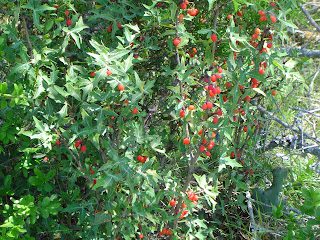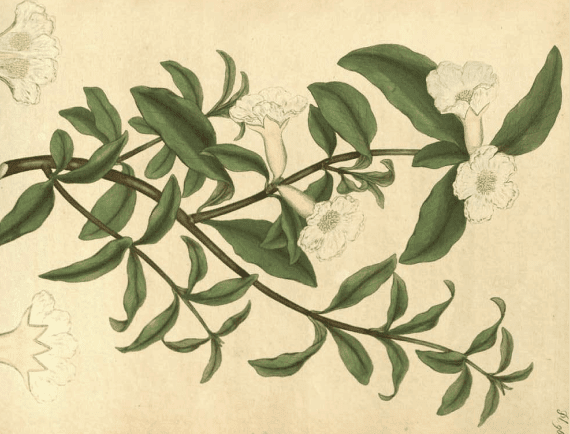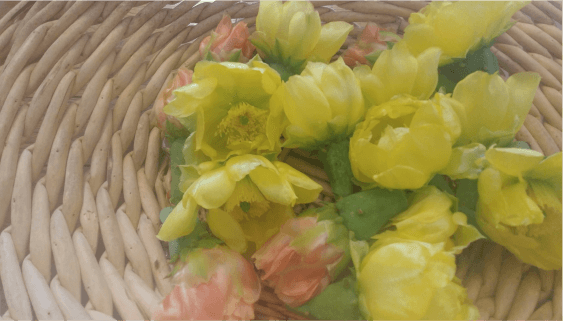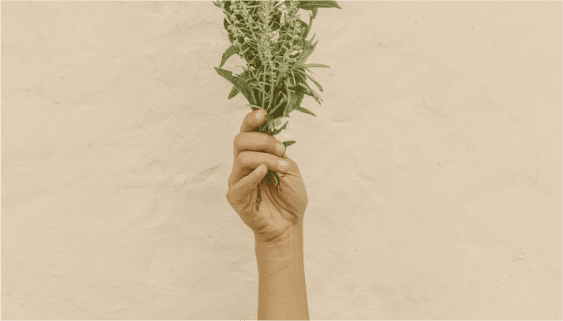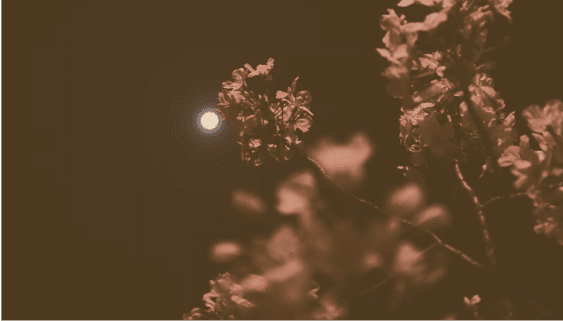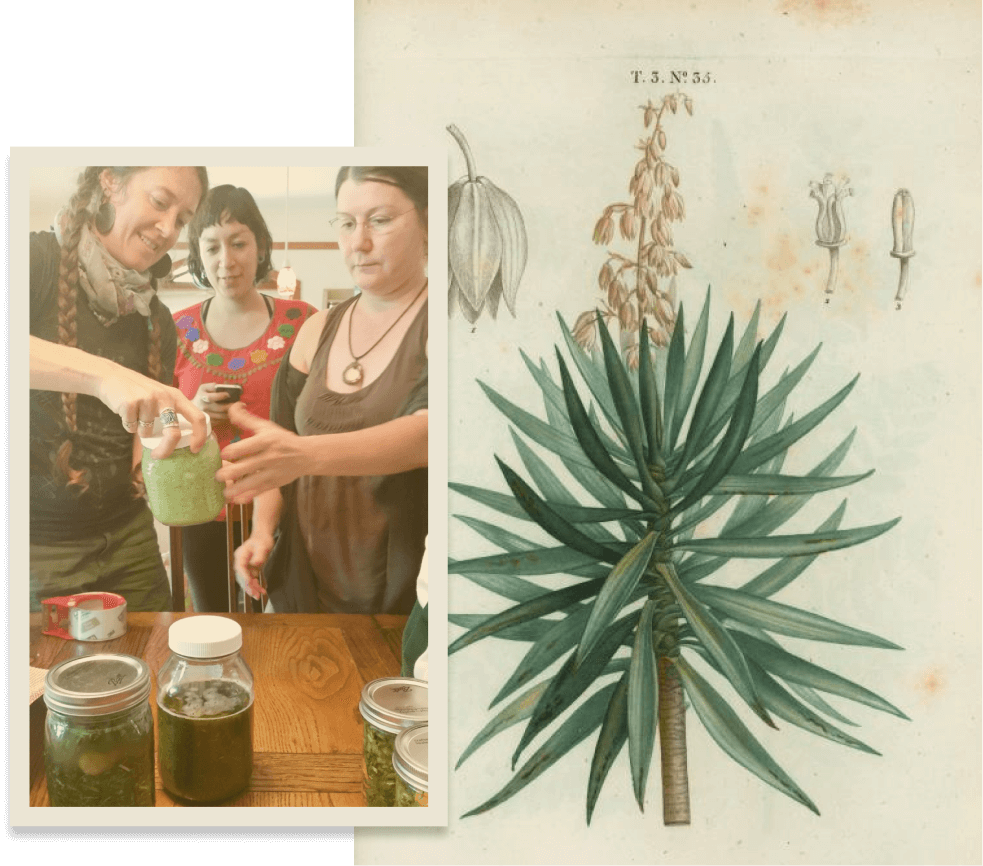Agarita’s official Latin name was Berberis/now Mahonia trifoliolata (don’t you love taxonomists!) and belongs to the Berberidaceae family of plants.
Description: Evergreen, perennial shrub. Agarita is covered with spiny trifoliate bluish-green leaves. In February in Central Texas it is just waking up and becomes covered with exceptionally intoxicating honey-smelling yellow flowers all over it. It is a understory plant in our woodlands and especially likes to grow along fencerows. You will see some venture out into the sun and still do well but their color will change and it does not seem to be their preference. Agaritas will survive well thru droughts and other extreme conditions. It is often misidentified as holly. Later in the spring the flowers turn into edible red berries.
Growing: Agarita is a great native medicinal to plant in the garden. It is attractive and feeds many different pollinators and animals. The plant does not like to be transplanted and can develop fungal infections. You may also want to choose where you plant it carefully, it is very spiny!
Harvesting: The aboveground woody parts are ready for harvest after the flowers begin to bloom and the energy is coming up away from the root. The root is totally unnecessary to harvest—and a pain in the butt to deal with.
Historical Use: Agarita has been used throughout history as a food and medicine. As a food, the berries are made into jelly and even a wine. In fact, Jack Keller has a great agarita wine recipe online. Agarita is related to the popular market herb Barberry as well as our native Oregon Grape Root —both used for centuries.
Modern Use: Its name gives an indication to its some of its value medicinally. Berberis contains berberine, an antimicrobial that has an affinity for the gi tract. Agarita can be used for any type of digestive infection. It is a bitter and liver stimulant used to treat things like indigestion and gas by herbalists. Agarita is also used topically to kill germs. It is an effective ingredient in herbal mouthwashes to treat infections.
Preparation: Agarita is water soluble and its yellow berberine will come out into teas and tinctures. I tend to make both. The leaves can be used in oil to kill infection and have been found by students to help take the sting out of ant and other bites
Clinical Use: I have many stories about the effectiveness of Agarita but one of the most poignant for me was when my dog ended up with MRSA(antibiotic resistant staph) in her broken spine from being hit by a car. I began doing research to see what herbal options I had. I decided to use Agarita like it’s cousin Barberry was used in Europe as adjunct therapy along with antibiotics to help kill staph. MRSA is very hard to treat, especially once inside the body as a blood infection. My dog was not expected to live, in fact no one had ever heard of a dog surviving that sort of infection in the spine but she beat the infection after 3 months of intense therapy. I gave her a strong decoction of the aboveground parts(1 tblspn), or 30 drops of tincture in a special raw food mix everyday for 3 months along with antibiotics and various other protocols found here. The infection cleared. She went on to live a happy life as our wonder dog!
